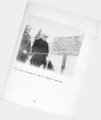| OCR Text |
Show Case 1, 19^8 Members of party: A and B, guests at Blank, excellent skiers; enthusiastic but inexperienced ski mountaineers; C and D, ski instructor and ski patrolman respectively, excellent skiers and experienced ski mountaineers. Events leading up to accident: C and D were going to test the Blank Creek Run, known to be dangerous at that time. A and B went along at their own request. The accident: C skied onto the slope followed immediately by A and B; slab plus dry snow avalanche fractured while all three were on the slope. C made an experienced ski mountaineer1s typical test run of a doubtful slope, a short fast dip in and out of the danger zone. Only the edge of the slide touched him. B and A went farther out onto the slope. B, nearest to the release point, managed to ski out to one side. A attempted to outrun it straight down the gully. He went over a rock ledge, apparently fell, and was picked up there by the slide. B, looking for A, went out onto another avalanche slope and started a second slide which buried the tip of the first one. Rescue operations: They were prompt, considering the distance from help, and well organized, accident happened at 2:00 p.m.; first party reached the scene at 3 ; 30 p.m.; follow-up party reached the scene at 9 ; ^5 P»m»» victim was found at 5;CK) a.m. the following morning. Elapsed time: 15 hours. Cause of death: suffocation. Immediate action was unsuccessful. Systematic probing was unsuccessful. Body was finally located by trenching. Weather and hazard dataJ Successive storms followed by prolonged cold; snow had not settled and was unstable. Terrain data: Conclusions: See sketch map. Mistakes v/hich were direct cause of accident: 1. B and A went onto the slope at once instead of waiting for C to complete his test run. 2. B and A went too far onto the slope. 3. A tried to outrun the avalanche. k. The second slide started by B complicated rescue operations. Under the conditions, the only hope of locating A quickly would have been an avalanche dog. -85- |








































































































